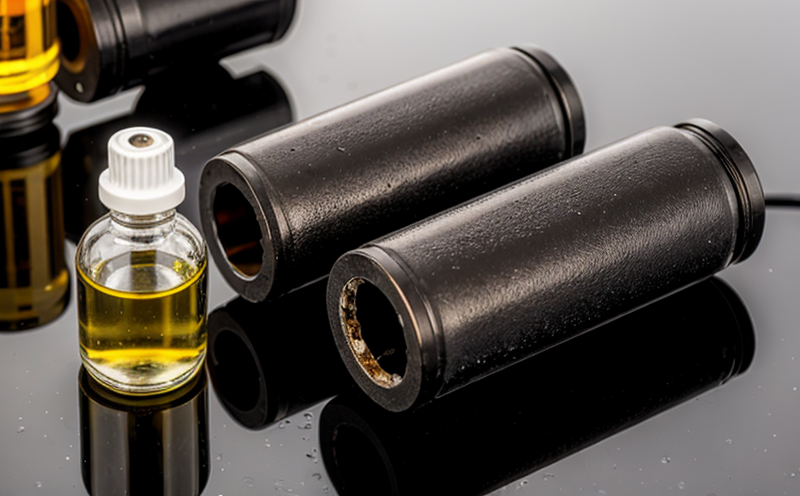EPA 8260 Volatile Hydrocarbons VOC Test in Water
The EPA Method 8260 is a comprehensive analytical protocol developed by the United States Environmental Protection Agency to determine volatile organic compounds (VOCs) in water samples. This method is particularly crucial for ensuring the quality of drinking water and assessing the environmental impact of hydrocarbon contamination in water bodies.
Hydrocarbons, including VOCs such as benzene, toluene, ethylbenzene, xylene, and other related compounds, can originate from various sources including industrial discharges, gasoline leaks, and solvent emissions. The presence of these compounds not only poses a risk to human health but also affects aquatic ecosystems.
Water utilities, regulatory agencies, and environmental monitoring organizations rely on the EPA 8260 method to ensure compliance with federal drinking water standards and to monitor water quality in various applications. This service is essential for assessing contamination levels and implementing remediation strategies where necessary.
The EPA Method 8260 involves a series of extraction steps followed by gas chromatography/mass spectrometry (GC/MS) analysis. The process begins with sample collection, which must be done under strict conditions to avoid contamination. Samples are then extracted using either solvent-based or solid-phase microextraction methods.
Following extraction, the samples undergo derivatization if necessary, and the resulting compounds are analyzed via GC/MS. This technique allows for high sensitivity and specificity in detecting even trace amounts of VOCs. The method's selectivity ensures that only volatile organic compounds are measured, thereby providing accurate results.
The acceptance criteria for EPA Method 8260 include a range of target concentrations, which vary depending on the specific compound being tested. These limits are set by the Environmental Protection Agency to ensure public health and environmental safety.
For quality managers, compliance officers, R&D engineers, and procurement professionals, this service provides critical data for decision-making processes related to water quality management and regulatory compliance. The results of EPA 8260 testing can influence policy decisions, operational procedures, and product development efforts within organizations.
Applied Standards
EPA Method 8260 is widely recognized and applied in various industries where water quality monitoring is crucial. The method adheres to the following standards:
- ISO 17025: Compliance with ISO/IEC Guide 25
- ASTM D3960-18: Standard Practice for Specifying and Evaluating Performance of VOC Analysis by GC/MS
- EN ISO 17741: Determination of Volatile Organic Compounds in Water by Gas Chromatography/Mass Spectrometry (GC/MS)
The method's adherence to these international standards ensures its reliability and validity across different testing facilities.
Industry Applications
- Water Utilities: Ensure compliance with drinking water standards and monitor for hydrocarbon contamination in source waters.
- Regulatory Agencies: Conduct routine monitoring to enforce environmental protection regulations.
- Environmental Monitoring Organizations: Assess the impact of industrial discharges on aquatic environments.
- Oil and Gas Industry: Monitor for leaks or spills that may affect water quality downstream.
- Chemical Manufacturing: Evaluate the effectiveness of wastewater treatment processes and ensure compliance with discharge limits.
- Pharmaceutical Companies: Analyze process waters to avoid contamination by hydrocarbons.
The versatility of EPA Method 8260 allows it to be applied across multiple sectors, making it a vital tool for maintaining water quality standards and protecting public health.
Use Cases and Application Examples
- Drinking Water Source Protection: Regular testing of raw water sources to detect early signs of hydrocarbon contamination.
- Treatment Plant Performance Monitoring: Continuous monitoring of treated wastewater to ensure that all VOCs are removed effectively before discharge.
- Industrial Discharge Compliance: Periodic sampling and analysis of industrial effluents to verify compliance with environmental regulations.
- Aquatic Ecosystem Protection: Studying the effects of hydrocarbon spills on aquatic life by assessing water quality parameters.
- Environmental Impact Assessments: Evaluating the impact of new developments or projects on nearby water bodies.
- Product Development and Quality Control: Ensuring that products do not introduce VOCs into water during use or disposal.
These applications highlight the importance of EPA Method 8260 in maintaining water quality standards across various industries and sectors.





